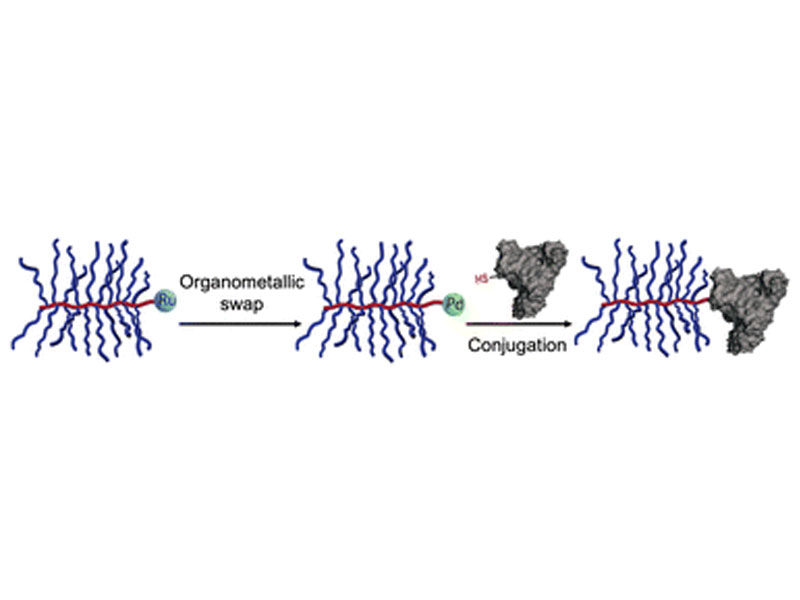
An organometallic swap strategy for bottlebrush polymer–protein conjugate synthesis

An organometallic swap strategy for bottlebrush polymer–protein conjugate synthesis
Bin Liu, ORCID logo ab Jacob Rodriguez, ORCID logo a Landon J. Kilgallon, ORCID logo a Wencong Wang, ORCID logo a Yuyan Wang,a Aiden Wang, ORCID logo a Yutong Dai,a Hung V.-T. Nguyen, ORCID logo a Bradley L. Pentelute ORCID logo abc and Jeremiah A. Johnson ORCID logo *abc
Abstract
Polymer–protein bioconjugation offers a powerful strategy to alter the physical properties of proteins, and various synthetic polymer compositions and architectures have been investigated for this purpose. Nevertheless, conjugation of molecular bottlebrush polymers (BPs) to proteins remains an unsolved challenge due to the large size of BPs and a general lack of methods to transform the chain ends of BPs into functional groups suitable for bioconjugation. Here, we present a strategy to address this challenge in the context of BPs prepared by “graft-through” ring-opening metathesis polymerization (ROMP), one of the most powerful methods for BP synthesis. Quenching ROMP of PEGylated norbornene macromonomers with an activated enyne terminator facilitates the transformation of the BP Ru alkylidene chain ends into Pd oxidative addition complexes (OACs) for facile bioconjugation. This strategy is shown to be effective for the synthesis of two BP–protein conjugates (albumin and ERG), setting the stage for a new class of BP–protein conjugates for future therapeutic and imaging applications.



